【English follows】中東から流れてくる映像内に、格子柄スカーフを巻く若者の姿を見かけたことがあるかもしれない。このスカーフは※クーフィーヤと呼ばれており、中東で従軍した欧米の兵士が自国に持ち帰ったことなども合わせ、中東以外の地域でもファッションの一つとしても取り入れられている。
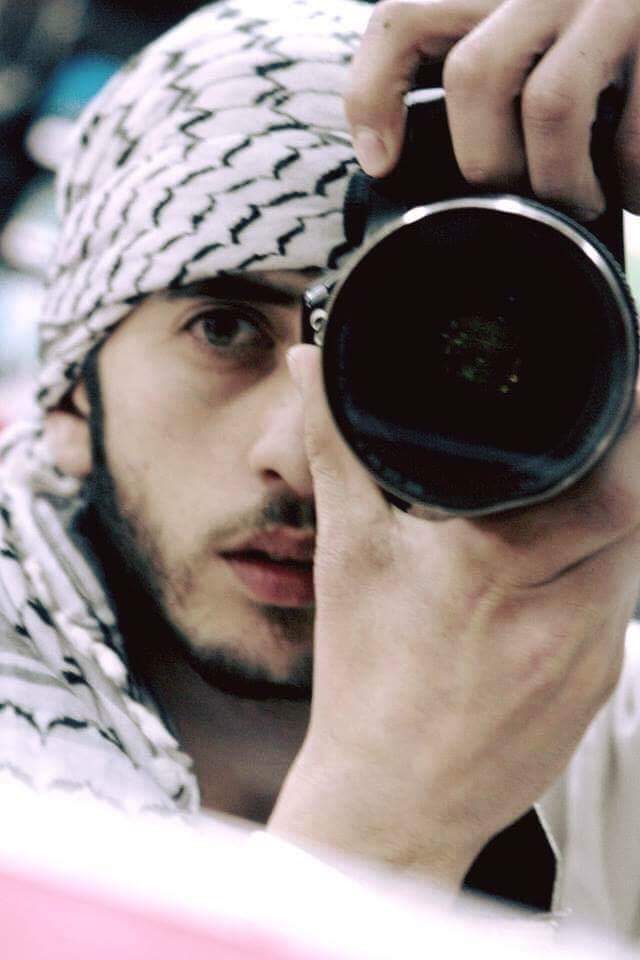
(※クーフィーヤには様々は呼称があるが、ここではパレスチナ地方で一般的になっている呼称である「ハッタ」、「クーフィーヤ」のうち「クーフィーヤ」を使用する。クーフィーヤの起源はイラクの都市クーファとも言われている。クーファは638年にイスラム教4代目カリフのアリーが軍事拠点としたことに発し10世紀頃まで栄えた)
その中でも、特に白と黒のクーフィーヤは、パレスチナ人にとって、自身を「パレスチナ人」として認識する際に、なくてはならないものとなっている。
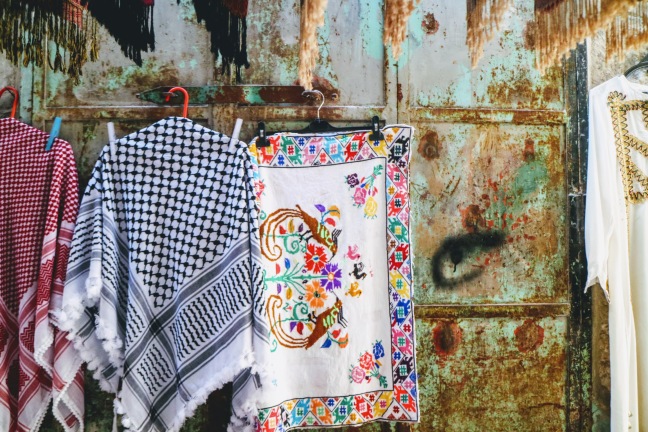
私の友人ラマは、クーフィーヤについて、こう教えてくれた。「そうね、クーフィーヤはパレスチナ人のアイデンティティーを示す象徴になっていて、もしあなたが一度それを身に着ければ、そんな肌の色をしていようとも、パレスチナ人としての意識を纏うことになる。そして周りの人々は、すぐにあなたがパレスチナ人と共にあることを認識すると思う。クーフィーヤを身に着けることは、あなたが誰であるか、そして今もまだ、占領下での苦しみの中にいるということを表現する方法でもあるの。そしてクーフィーヤを身に着け、パレスチナ人と共にいるときは、私の気持ちを強く、イスラエル人に囲まれている時は私を果敢で勇猛な気持ちにさせる」と。現在ラマの故郷、ガリラヤ湖南カルメル山付近に位置するアッラバ・アルバトゥーフ村はイスラエル国家成立により、イスラエル領地内にある。
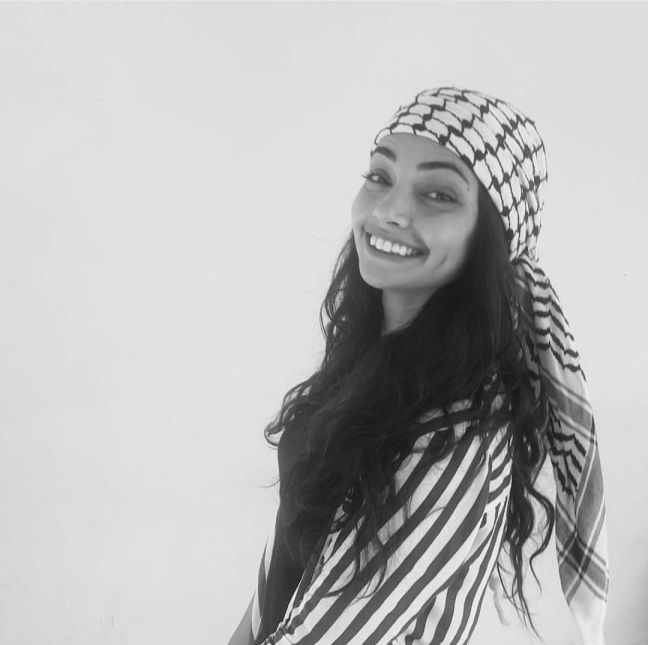
パレスチナ人が、どうしてこうも、この白と黒のクーフィーヤに「パレスチナ」を反映させるのだろうか?
クーフィーヤは遠い遠い昔から、パレスチナの地に住む人々と共にあり、農村民(ファラヒーン)や遊牧民(ベドウィン)が、羊毛や山羊の毛、コットンから織ったクーフィーヤを身に着け、夏は強い日差しから、そして冬は寒さから身を守っていた※。
オスマン帝国時代以降まで都市民がフェズと呼ばれるトルコ帽を被っていた一方、農村民はクーフィーヤを身に着けており、友人のヤラは「白と黒のクーフィーヤは素朴な農民の生活を反映している」という※。
(※赤と白のクーフィーヤはより分厚い布であるためベドウィンが被る傾向にあるが、農民でも冬場に暖かいからという理由で赤白を被っている人はいる。※同じ都市民でも、ナブルスの住民はトルコ帽を、ヘブロンの住民はクーフィーヤを被っていたとのこと)
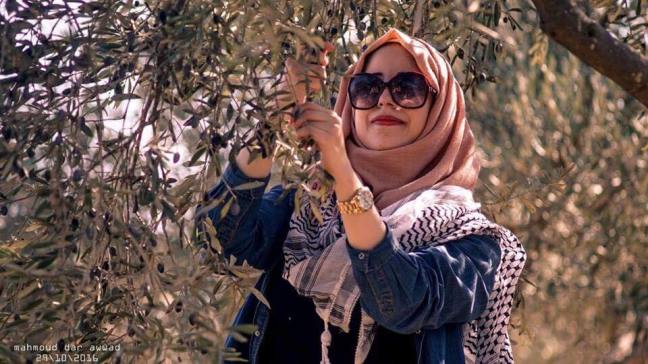 そしてこの土地と密接に繋がり、人口の大部分を占める農村民たちは、パレスチナの地において常に占領に対する抵抗運動の主体となってきた。
そしてこの土地と密接に繋がり、人口の大部分を占める農村民たちは、パレスチナの地において常に占領に対する抵抗運動の主体となってきた。
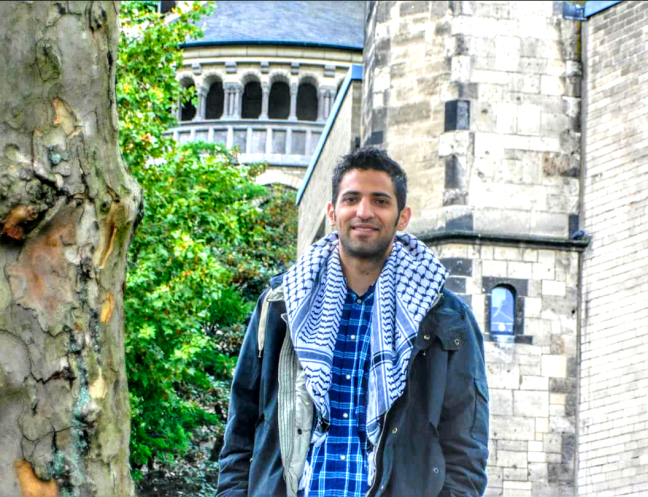 オスマン帝国崩壊後に、イギリスの委任統治領となったパレスチナで、イギリス兵は村々で略奪を行ったり、反対する者を片っ端から逮捕するなど、パレスチナの人々から強い反感を買っていった。さらにユダヤ人の大量流入も加わり、パレスチナ人の怒りは頂点に達し、1936年、イギリス委任統治に対する反乱が始まり(アラブの大反乱)、イギリス軍、ユダヤ人武装勢力との間で武力闘争が始まる。
オスマン帝国崩壊後に、イギリスの委任統治領となったパレスチナで、イギリス兵は村々で略奪を行ったり、反対する者を片っ端から逮捕するなど、パレスチナの人々から強い反感を買っていった。さらにユダヤ人の大量流入も加わり、パレスチナ人の怒りは頂点に達し、1936年、イギリス委任統治に対する反乱が始まり(アラブの大反乱)、イギリス軍、ユダヤ人武装勢力との間で武力闘争が始まる。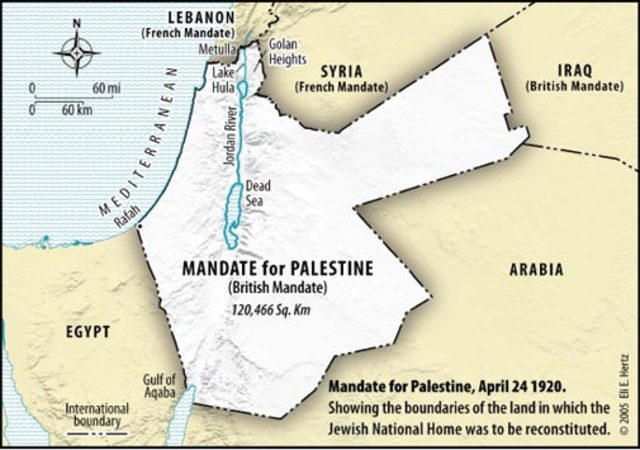
Palestinian Arabs at Abou Ghosh take the oath of allegiance to the Arab cause to fight Jewish 1936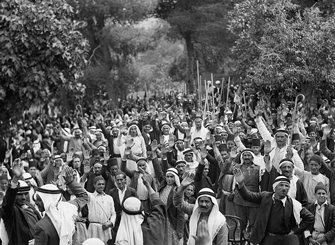
村落や地方で反乱に身を投じていた人々は、顔を認識されることや攻撃による被害を防ぐため、日常的に使っていたクーフィーヤで顔を覆うようになったが、これはイギリス兵にとって容易に反乱民を見分けることができる要因となったので、当時の反乱指導層は全ての市民にクーフィーヤを付けるよう指示したという。
800px-Ottoman_surrender_of_Jerusalem_restored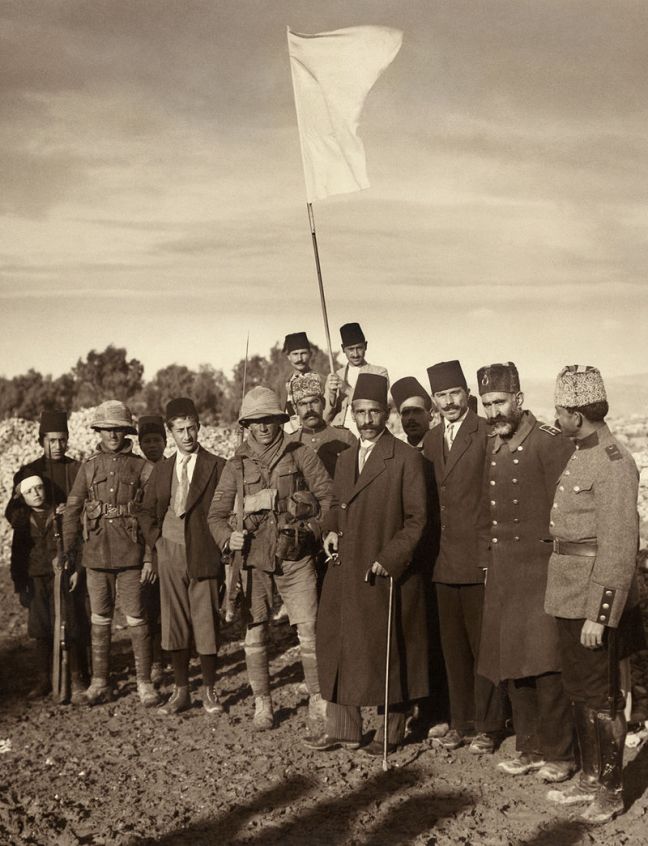
Members of the Palestinian Resistance, 1948 Institute for Palestine studies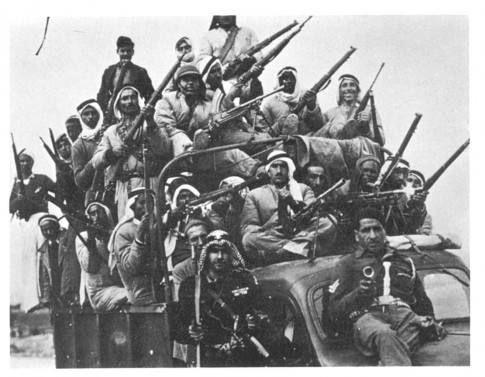
それはパレスチナの人々を反乱による革命運動の一員として自らを「パレスチナ人」と認識し、団結を強めていくきっかけにもなったのかもしれない。そして、第一次中東戦争によるイスラエル建国後、パレスチナの解放を目指し、武装闘争を繰り広げていたファタハのリーダー,[自由の闘士]ヤーセル・アラファトが表舞台に登場し、彼がパレスチナ抵抗運動の象徴である白と黒のクーフィーヤをトレードマークとして、被っていたことが、この白黒のクーフィーヤをパレスチナの占領に対する抵抗の象徴としての役割の決定打となった。
(※ファタハに続いて結成された共産系のPFLPはファタハとの違いを示すため、共産主義の代表色である赤を取り入れた赤白のクーフィーヤを身に着けている。パレスチナで、老人が赤白のクーフィーヤを身につけていても、そこに政治的意味合いはないかもしれないが、若者がつけていると、PFLPやその分派団体への支持を示すとみることができるかもしれない)
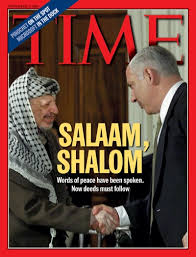 このように、農村民のシンボルであったクーフィーヤは、闘争に身を捧ぐ農村民たちとともに抵抗運動の中で、その地位を獲得し、抵抗の中で生まれるパレスチナ人という意識の形成過程の中で重要な役割を担ったともいえるのかもしれない。
このように、農村民のシンボルであったクーフィーヤは、闘争に身を捧ぐ農村民たちとともに抵抗運動の中で、その地位を獲得し、抵抗の中で生まれるパレスチナ人という意識の形成過程の中で重要な役割を担ったともいえるのかもしれない。
しかし、このパレスチナ人のアイデンティティーを示す上で、外すことの出来ないクーフィーヤを生産する工場は、ヘブロンでハルバウィHerbawi家が経営するテキスタイル工場のみとなっている。
 アフリカ、ユーラシアの間に位置するパレスチナ地方は、古くから人や物が行き交う十字路として栄え、特に南部のヘブロンや海岸沿いでエジプトにも近いガザでは織物業が盛んとなり、ガザはガーゼの由来ともいわれているほどだ。工場の創設者であるヤセル・ハルバウィ氏は、クーフィーヤをシリアから輸入していたが、そこは商人の町ヘブロン出身のヤセル氏、パレスチナのナショナリズムの高まりと共に高まったクーフィーヤの需要に目を付け、1960年代に工場を設立。70年代には日本から機織り機を仕入れ、年間10万枚のクーフィーヤを生産していたという。しかし、占領やパリ経済協定の影響や、中国産のクーフィーヤが市場に出回り始めてからは、工場での生産は下火になり、工房内に鳴り響いていた機を織る音はしなくなってしまった。しかし、地元産業の要求によって、パレスチナ自治政府が経済政策を変更し、中国製品や海外からの品物に関税をかけるようになり、またパレスチナ問題が世界中で認識されるようになってからは、生産にも光が見えるようになったという。
アフリカ、ユーラシアの間に位置するパレスチナ地方は、古くから人や物が行き交う十字路として栄え、特に南部のヘブロンや海岸沿いでエジプトにも近いガザでは織物業が盛んとなり、ガザはガーゼの由来ともいわれているほどだ。工場の創設者であるヤセル・ハルバウィ氏は、クーフィーヤをシリアから輸入していたが、そこは商人の町ヘブロン出身のヤセル氏、パレスチナのナショナリズムの高まりと共に高まったクーフィーヤの需要に目を付け、1960年代に工場を設立。70年代には日本から機織り機を仕入れ、年間10万枚のクーフィーヤを生産していたという。しかし、占領やパリ経済協定の影響や、中国産のクーフィーヤが市場に出回り始めてからは、工場での生産は下火になり、工房内に鳴り響いていた機を織る音はしなくなってしまった。しかし、地元産業の要求によって、パレスチナ自治政府が経済政策を変更し、中国製品や海外からの品物に関税をかけるようになり、またパレスチナ問題が世界中で認識されるようになってからは、生産にも光が見えるようになったという。
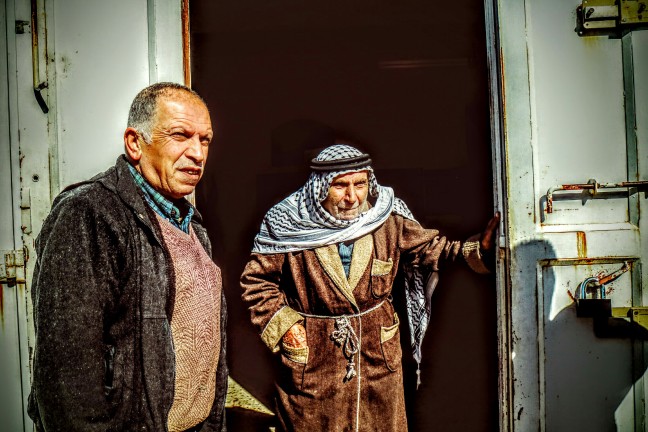
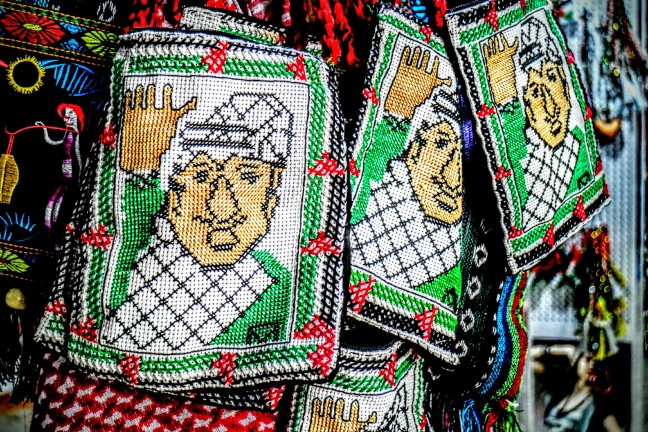

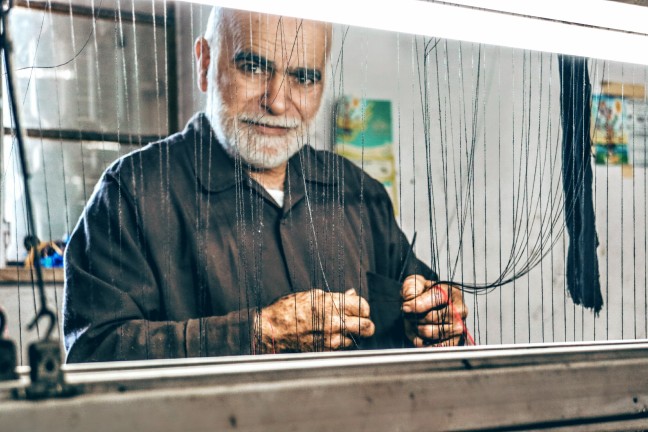
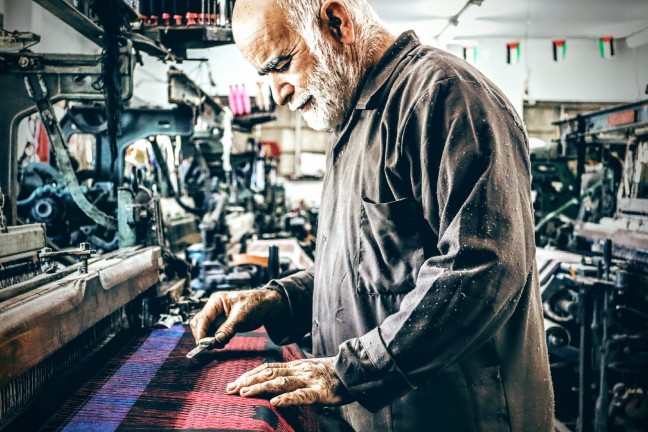
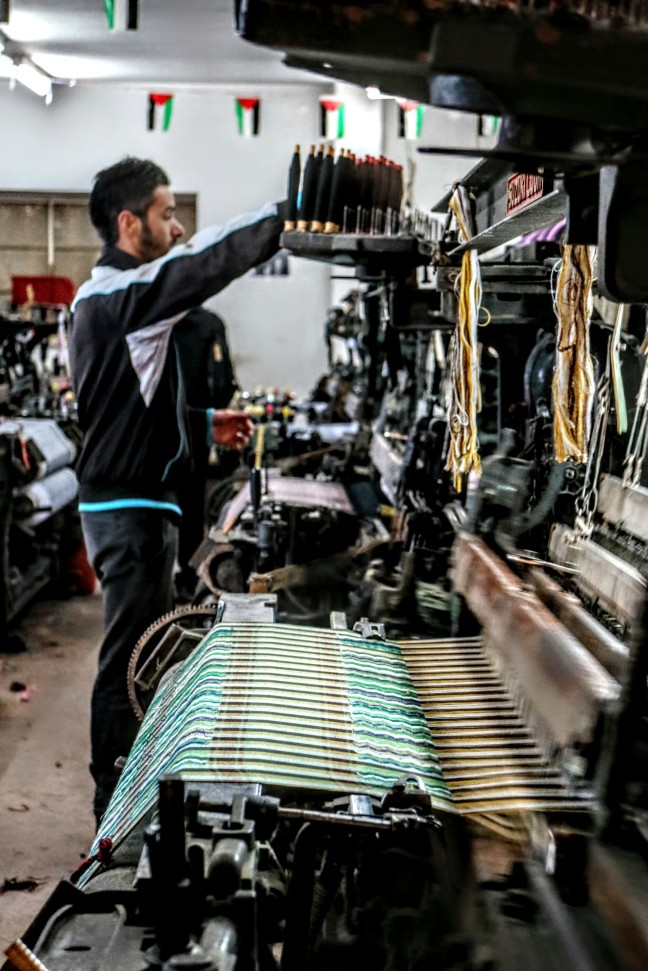
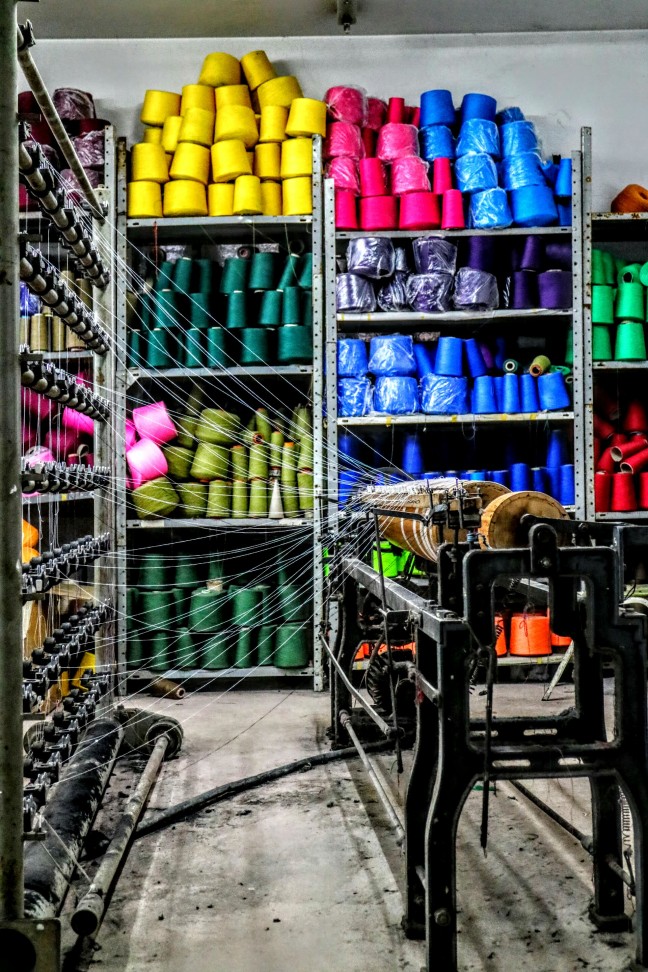

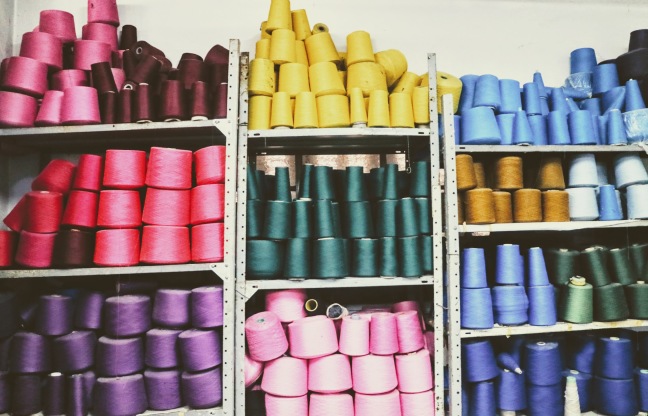





 ガタガタと織機がリズムを刻む中、踊りたい気持ちになっている私の気持ちを知ってか知らずか、黙々と作業をする数人の職人たち(もちろん知らないし、知る必要性もない)。私たちの訪れを知り、一人の老齢の職人が手を止め、ホスピタリティーで有名なヘブロン人らしく、口をとがらせ「ちゅっ」と音を鳴らし、歓迎の意を示してくれた。温かな気持ちと共に、このパレスチナで小規模な事業を続けることの難しさを感じながら、機織りの音が鳴り響く空間の扉をそっと閉めた。
ガタガタと織機がリズムを刻む中、踊りたい気持ちになっている私の気持ちを知ってか知らずか、黙々と作業をする数人の職人たち(もちろん知らないし、知る必要性もない)。私たちの訪れを知り、一人の老齢の職人が手を止め、ホスピタリティーで有名なヘブロン人らしく、口をとがらせ「ちゅっ」と音を鳴らし、歓迎の意を示してくれた。温かな気持ちと共に、このパレスチナで小規模な事業を続けることの難しさを感じながら、機織りの音が鳴り響く空間の扉をそっと閉めた。
You might have seen the guys wear the scarf with the diagonal pattern in the News from the Middle East. It is called Kuffiyah* and it became a fashion trend, especially in Western countries, because the returning soldiers who served in the wars in the Middle East brought the culture to their own countries.
(* There are the various name for this scarf such as, ‘‘Kuffiyah’’and ‘‘Hatta’’. However, I will use ‘‘Kuffiyah’’ in here. It is said that the original name of ‘‘Kuffiyah’’ is from Kufa city in Iraq that was founded as the military basement by 4th Caliph Ali in Islam in 638 and flourish until 10th century)
Particularly, the black and white Kuffiyah pattern has emotional nuances for the Palestinians and they identify themselves in it.
My friend Lama told me: ‘‘Well, Kuffiyah became the symbol of the Palestinian identity. Once you wear it among Palestinians it does not matter which colour of skin you carry. People see you as one of them right away. It is a way to express and show that you still remember who you are and the struggle you are living under occupation.As for the feeling, it makes me feel powerful when surrounded by Palestinians and bold and daring when surrounded by Israelis’’.
Her hometown is named Arrabah Al-Batouf located close to Mount Karmel in Israeli territory, a surviving Palestinian village after the 1948 Arab-Israeli war.
However, why Palestinian reflect their own identity in this black and white scarf a lot?
For so long, Kuffiyah existed with the local people who have led their life in nature. The villager and nomads made Kuffiya from wool and cotton to protect them from the strong sunshine and sand in the summer and freezing temperatures and winds in the winter.
My friend Yara said: ‘‘Kuffyah or hatta with white and black colour reflects the simplicity of a farmer’s life in the villages ’’, on the contrary, the Urban people wore Ottoman style hat ‘‘Tarbush’’ after the Ottoman period.
(Red and White Kuffiyah is heavier, so Bedouin (also popular in Gulf and Jordan) tend to wear this. However, Palestinian also wear Red and White Kuffiya because of its warmness in the winter. In addition, after the Ottoman period, Urban Hebron residents wore Kuffiyah and residents of Nablus wore Turkish Tarbush on their head.)
The Villagers who are called ‘‘Falaheen’’ in Arabic took the initiative of the Resistance against the British mandate and the Jewish organizations by then.
After the corruption of the Ottoman Empire, British mandate soldiers were met with the anger of Palestinians because they robbed in the villages and arrested many Palestinians who were suspected of resisting the British policies and the huge influx of Jews to the land of Palestine. Finally, the Arab-revolt occurred in 1936 against British and Jewish armed groups.
During this time, the people in the villages ‘‘Falaheen’’ plunged themselves into the revolution covered their faces with Kuffiyah which was part of their daily life to avoid being identified by British soldiers and their spies. However, it made British side to distinguished the member of revolution easier, therefore the Palestinian revolutionary command issued a decision to wear the Kuffiyah to all the people in the cities. This event raised the solidarity among Palestinians, and I might say this was the important point for Palestinians to develop their identity as Palestinians while taking part in the revolution.
Decades after, one of the founders of Fatah movement which aimed to free Palestine and fight against Israel Yasser Arafat appeared on the stage with the symbol of revolution Kuffiyah. As you see above, I may say this is how the black and white Kuffiyah gained its status as a symbol for the Palestinians through the series of resistances.
(The side of communist groups which were established after Fatah, such as PFLP, wears Kuffiyah with red and white, due to red as Communist symbol colour, to show the difference between Fatah. You can see the political favour if you see youth were red-white Kuffiyah, however, there might be no political meaning if elderly people wear red-white Kuffiyah in Palestine.)
Historically, Palestine which is located between Africa and Eurasia continents flourished as the crossing point for the trade. Especially the textile industry which was popular in Hebron and Gaza (It is said that the origin of Gaze is from Gaza city ).
However, there is only one Kuffiyah producer who remains in Palestine which is Herbawi textile factory in Hebron.
The factory founder Mr. Yasser Harbawi imported headscarves from Syria before he established his factory in the 1960s. The Hebronian business-wise Mr. Yasser realized the demand of Kuffiyah because of the rise of the nationalism in Palestine. He imported textile machines from Japan in the 70s, and the factory produced 10,000 garments yearly. However, the amount of production declined due to the influence of Israeli occupation, Paris protocol for the economy and the Chinese production of Kuffiyah. But the situation has improved after the Palestinian Authority changed their policy to tax Chinese made Kuffiyah and other foreign products by local lobbyists. In addition, the Kuffiyah have been exported abroad due to a huge popularity of the Palestinian issue.
In the factory, a few craft-men worked while I kept the feeling that I want to dance because the looms beat the rhythm. One elderly ‘‘Hajji’’ craft-man stopped working and blew up a kiss as a welcoming gesture, which was his way of saluting friendly. My heart was filled by warmness while I realized the difficulty to continue the business of the small factory in Palestine. I closed the door of the rhythmic machine room and said goodbye to the factory.
